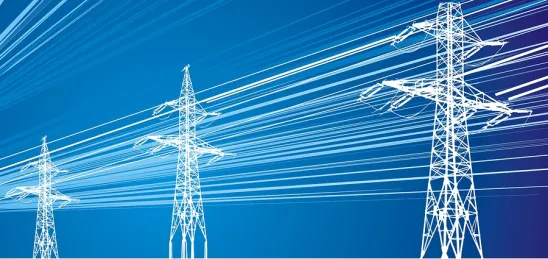The Biden Administration has proposed the creation of a new tax credit under the new Section 48D of the Code for qualifying electric power transmission property that is placed in service after December 31, 2021, but before January 1, 2032 (such credit, the “Section 48D Credit”). The proposal would also allow a direct-pay option to elect a cash payment. The proposed credit would be for an amount equal to 6% of a to-be-determined eligible basis (the “Base Rate”), with a possible increase to 30% (the “Bonus Rate”) if certain criteria are met.
Qualifying property would include overhead, submarine and underground transmission facilities meeting certain criteria, including a minimum voltage of 275 kV and a minimum transmission capacity of 500 MW, and any ancillary facilities and equipment necessary to operate such project. A qualifying electric transmission line may be a replacement, or upgrade, to an existing electric transmission line if the transmission capacity of such electric transmission line, as upgraded, increases to an amount equal to the existing capacity of such transmission line plus 500 MW. However, the basis allocable to the existing transmission line would not be eligible for the Section 48D Credit.
Certain property and projects already in process are not eligible for the Section 48D Credit if (i) a state or political subdivision thereof, any agency or instrumentality of the US, a public service or public utility commission or other similar body of any state or political subdivision, or the governing or rate-making body of an electric cooperative has, before the date of the enactment of these rules, selected such property for cost recovery, (ii) construction begins before January 1, 2022, or (iii) construction of any portion of the qualifying electric transmission line to which such property relates begins before January 1, 2022.
In addition to the technical requirements, to claim the credit at the Bonus Rate, the project must satisfy the new prevailing wage and apprenticeship requirements. To satisfy the prevailing wage requirement,any laborers and mechanics employed by contractors and subcontractors must be paid prevailing wages during the construction of such project and, in some cases, a defined period after. To satisfy the apprenticeship requirement, no less than the applicable percentage of total labor hours (5% for projects for which construction begins in 2022, 10% for projects beginning construction in 2023, and 15% thereafter) must be performed by qualified apprentices. Additionally, each contractor and subcontractor who employs four or more individuals to perform construction on an applicable project must also employ at least one qualified apprentice or, in the case of a lack of availability, show a good faith effort to do so. If a non-exempt project fails to meet the wage and apprenticeship requirements, but otherwise meets the technical requirements for the Section 48D Credit, such property will qualify for the Base Rate.
Finally, qualifying electric power transmission property is eligible for an increase to either the Base Rate or the Bonus Rate if such project meets the domestic content requirement, which requires the steel, iron, or other manufactured products that comprise the project be produced in the United States (i.e., at least 55% of the total cost of the components of such product is attributable to components that are mined, produced, or manufactured in the United States). Projects satisfying this requirement could be eligible for a 2% increase to the Base Rate or a 10% increase to the Bonus Rate.




 />i
/>i
